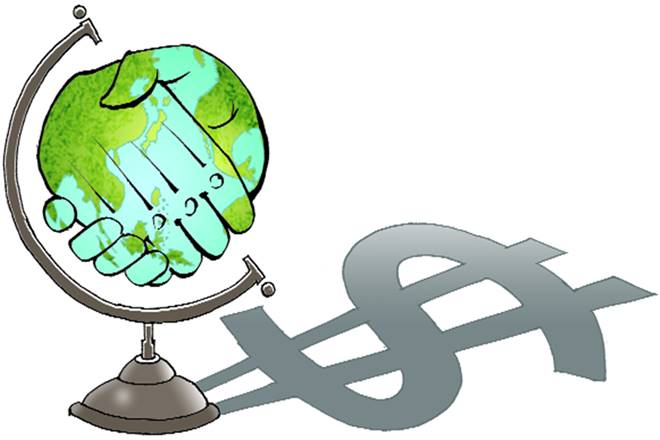There were expectations of India affirming its commitment to the Regional Comprehensive Economic Partnership (RCEP) during Prime Minister Narendra Modi’s recent three-nation visit to Southeast Asia. The Prime Minister did emphasise India’s eagerness for a quick conclusion of the RCEP, but considerable ground remains to be covered before India and 15 other Asian countries can conclude the framework—for what will be the world’s largest free-trade agreement (FTA), covering almost half of the global population.
There is no denying the momentum that RCEP talks have picked up in 2018. This is in contrast to the scepticism and lethargy that characterised negotiations till not long ago. A grouping as economically heterogeneous as the RCEP is bound to have difficulties in matching ambitions among members.
The RCEP includes some of the world’s wealthiest economies (for example, Australia, Singapore, New Zealand) along with the largest (China, Japan, India, South Korea) and small low-income economies (such as Cambodia, Myanmar, Lao PDR). Not only do RCEP members have different visions of world trade, but also different qualities of domestic economic institutions, regulations and comparative advantages. It is exceedingly difficult to hit common ground among members even on basic issues core to all FTAs, such as elimination of tariffs and effective Rules of Origin (ROOs).
A large part of RCEP negotiations have focused on agreeing upon a common schedule of items for eliminating tariffs among members. Reaching an agreement has not yet been possible, notwithstanding the fact that the group comprises the ASEAN and its six FTA partners—Australia, New Zealand, China, India, Japan and South Korea—with the latter integrated to the former through ASEAN Plus FTAs with dedicated tariff elimination schedules. If agreeing to a common programme for cutting tariffs has been so tough, one can imagine the difficulty the RCEP has had in progressing on new-generation trade issues like services, investment, intellectual property and e-commerce.
It’s not just economic differences that have complicated RCEP talks. Mistrust among members, particularly non-ASEAN members without bilateral FTAs between them, has also created problems. These include examples like India and China, and China and Japan, who, in spite of being large trade partners of each other, don’t have FTAs and have never negotiated trade agreements among themselves.
Apprehensions over granting each other ‘extra’ market access by agreeing to a common programme of tariff cuts, or services and investment rules, have, therefore, been major hurdles to progress. Matters haven’t been helped by the growing scepticism regarding FTAs and their benefits, following the US withdrawal from the Trans-Pacific Partnership (TPP) in early 2017—an agreement that includes several RCEP members.
The current year has witnessed more enthusiasm and urgency in talks. Some of the credit for this must go to India, which, in the eyes of several other members, has been the biggest obstructor. India’s more proactive participation in the recent Ministerial conferences and negotiations has conveyed the impression of it being keen on having a deal.
Furthermore, spirits in the region have been lifted by India’s decision to mark ‘2018’ as the year of its deepening engagement with Southeast Asia and the coming of age of Prime Minister Modi’s ‘Act East’ policy. Many feel this ensures the political will and resultant meaningful consultations between top leaderships of India, Southeast Asia and other RCEP members essential for bridging gaps that trade negotiators haven’t been able to. To this extent, Modi’s latest assurance on the RCEP adds to the good feeling.
Political will and the urgency to ‘get on’ for wrapping up the deal has made prospects brighter for the RCEP. This, however, doesn’t mean that obstacles are fading away fast. Chances are that the forthcoming Ministerial in Tokyo in July, coming quickly on the heels of the earlier one in Singapore in March, will settle for ‘political’ solutions to many unresolved issues. That would hasten closure of negotiations and formalisation of a framework agreement.
In the process, however, members will have to compromise on ambitions in various spheres. While some would have to settle for a deal that pegs lesser market access than they desired, others will have to agree to conceding more than they would have wanted to. The ultimate test of the deal hammered out would be the ease with which members are able to ‘sell’ the RCEP to domestic constituencies and get their legislatures to ratify it.
This is expected to be a lengthy process in many countries, including India, where championing free trade is currently tantamount to encouraging political suicide. On the whole, though, the pace picked up by the negotiations, and the quick frequency with which trade ministers have met in the current year, holds out hope for a deal that many felt was nothing other than fruitless waste of negotiating energy and resources.
Even if a low-quality RCEP comes through, it will bring some cheer for the moribund world of international trade. Apart from being the largest FTA signed, it will be a prominently ‘inclusive’ agreement. It would be the first such deal to include low-income and least developed countries with special provisions in spite of scoping new-generation trade issues.
At a time when the World Trade Organisation (WTO) is sluggish and struggling to deliver, the RCEP can recharge global trade prospects by positing a template for 21st-century trade that accommodates the smaller players in global trade as well.
The author is Senior Research Fellow & Research Lead (Trade & Economic Policy), Institute of South Asian Studies, National University of Singapore. Views are personal. (isasap@nus.edu.sg)


